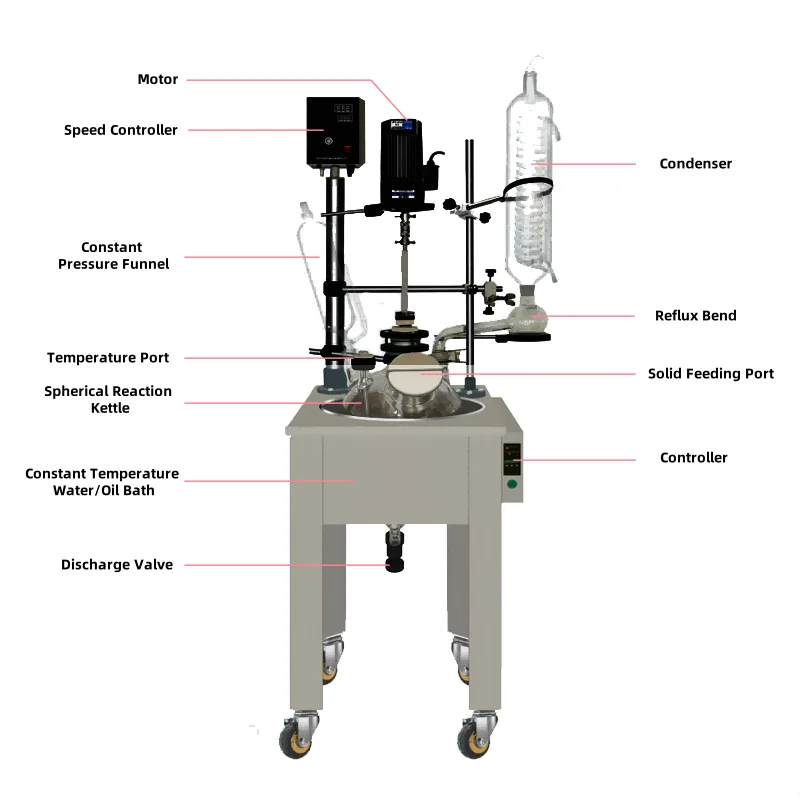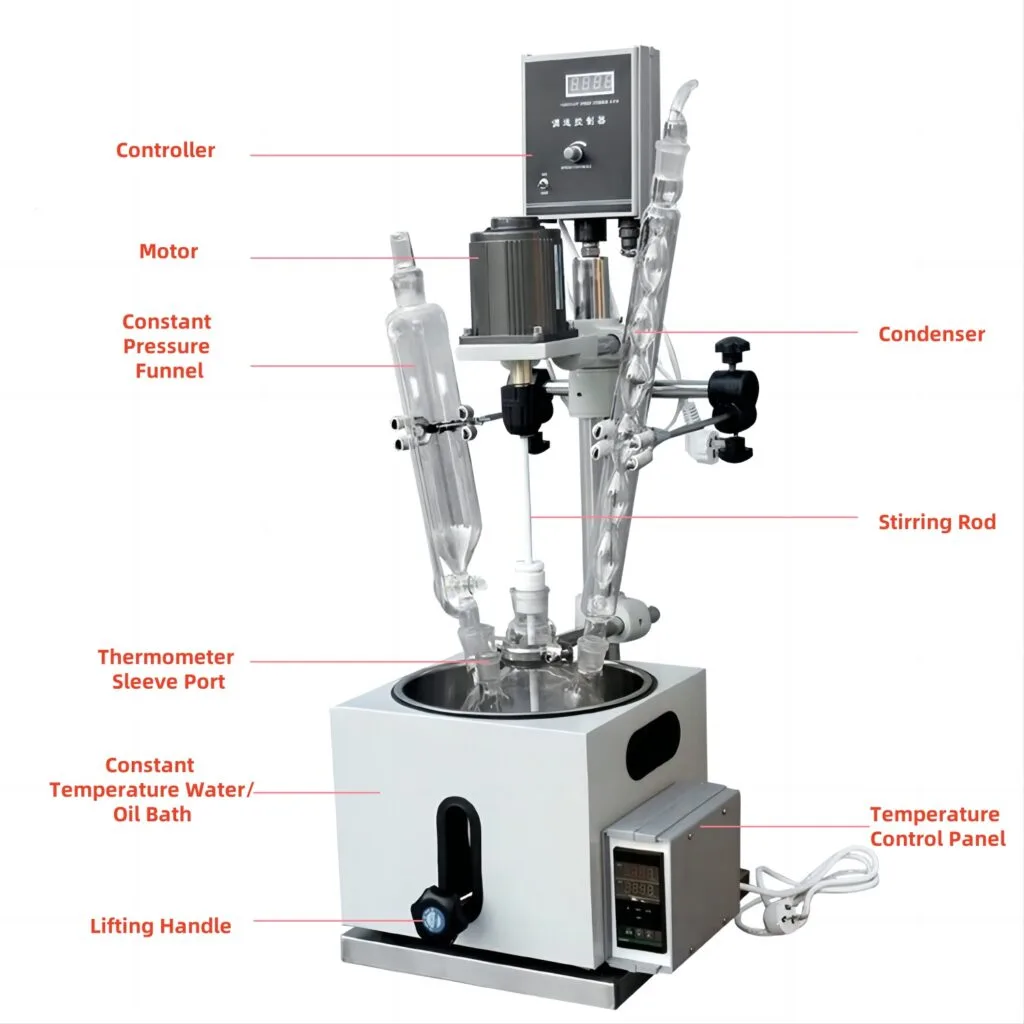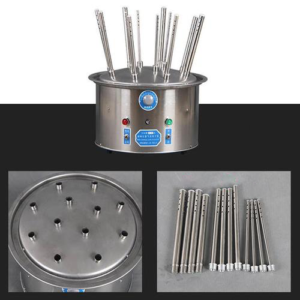In laboratory settings, the precision and reliability of equipment play a crucial role in the success of any experiment. Among the most indispensable tools used for chemical reactions, mixing, and synthesis is the single glass reactor for lab experiments. These reactors are commonly employed for their efficiency, versatility, and ease of use. This article delves into the key features, advantages, and considerations when selecting a single glass reactor for laboratory applications.

What is a Single Glass Reactor for Lab Experiments?
A single glass reactor for lab experiments is a laboratory device designed to carry out chemical reactions under controlled conditions. Typically, these reactors consist of a single glass vessel equipped with essential components such as a stirring mechanism, heating or cooling systems, and a reflux condenser. The structure is designed to ensure safe and precise reactions while maintaining the integrity of the substances inside.
The design of the reactor allows for the mixing of liquids or solids, and with the incorporation of a temperature control system, it can regulate the reaction environment effectively. The reactor’s transparent glass walls allow researchers to observe the reaction in real-time, making it an invaluable tool for experimentation.

Key Features of the Single Glass Reactor
- Transparency for Real-time Observation: One of the most important features of the single glass reactor for lab experiments is its transparency. The glass vessel allows researchers to directly monitor chemical reactions as they occur. This transparency aids in precise adjustments and helps avoid errors during critical processes.
- Versatile Functionality: The single glass reactor for lab experiments can be used for a wide range of reactions, including those requiring high temperature, low temperature, or vacuum conditions. This versatility makes it an ideal choice for laboratories working with a variety of chemical processes, from research and development to small-scale production.
- Integrated Heating and Cooling: Many single glass reactors are equipped with integrated heating and cooling systems that allow precise control over the temperature of the reaction mixture. This feature is especially important in experiments that involve exothermic or endothermic reactions, as temperature regulation is key to ensuring safe and controlled conditions.
- Efficiency in Mixing: The stirring mechanism within the reactor ensures uniform mixing of the contents. The ability to control the speed and type of stirring is vital for consistent reaction results. Efficient mixing also reduces the chances of uneven reactions, which could lead to inaccurate or failed outcomes.
- Safety Features: Safety is a top priority in any laboratory, and the single glass reactor for lab experiments is designed with safety features such as pressure relief valves, leak-proof seals, and safe glass construction. These safety measures prevent accidents and ensure that the reactor can withstand the demands of high-pressure and high-temperature reactions.
- Easy Maintenance: The design of a single glass reactor makes it relatively easy to clean and maintain. The smooth, non-porous glass surface prevents contaminants from sticking to the vessel, and most reactors are designed for simple disassembly, allowing for thorough cleaning between experiments.
Applications of the Single Glass Reactor in Lab Experiments
The single glass reactor for lab experiments is commonly used in various fields of research, including chemistry, pharmaceuticals, and biotechnology. It is particularly valuable for conducting synthetic reactions, where precise temperature and pressure control are essential for achieving the desired chemical products. Additionally, the reactor is useful in the development of new formulations in the pharmaceutical industry, as well as in producing small batches of chemicals for further testing.
In research and development, these reactors are used for process optimization, where researchers can experiment with different conditions to fine-tune reaction parameters. For example, the temperature, stirring speed, and pressure can all be adjusted to optimize the reaction efficiency and yield.
Advantages of Using a Single Glass Reactor
- Enhanced Control: The ability to control various reaction parameters in a single glass reactor for lab experiments provides researchers with enhanced control over the outcome of the experiment. Whether adjusting the temperature, pressure, or stirring speed, these reactors provide a high degree of precision that is crucial for obtaining accurate and reproducible results.
- Space-saving Design: Single glass reactors are compact and designed to save space in the laboratory. Their sleek, efficient design allows for easy integration into laboratory workflows without taking up too much room, making them an ideal choice for labs with limited space.
- Cost-Effective Solution: Compared to larger-scale reactors, single glass reactors are relatively cost-effective, making them accessible to smaller laboratories or those with tighter budgets. Despite their affordable price, these reactors offer high functionality and can handle a wide range of experiments.
- Durability: Glass is a material known for its resistance to chemical corrosion and high temperatures, which makes the single glass reactor for lab experiments durable and long-lasting. The reactor’s longevity helps minimize replacement costs and ensures that it can withstand repeated use.
How to Choose the Right Single Glass Reactor for Your Lab
When selecting a single glass reactor for lab experiments, several factors should be considered to ensure it meets the specific needs of your lab. These include:
- Volume: Ensure that the reactor’s capacity aligns with the scale of your experiments. For small-scale applications, a 2L or 5L reactor may suffice, while larger reactors are required for larger batch productions.
- Temperature and Pressure Rating: Depending on the types of reactions you plan to conduct, choose a reactor with the appropriate temperature and pressure ratings.
- Mixing and Stirring Mechanism: Look for a reactor with adjustable stirring speeds and a design that suits your specific mixing requirements.
- Ease of Use and Maintenance: A user-friendly interface and easy maintenance are crucial for ensuring the reactor’s long-term functionality and minimizing downtime.
For more details, EquilRxnLab offers a range of single glass reactors for lab experiments designed to meet these specifications. Their products, such as the 2L Sphere-type Glass Reactor, offer excellent versatility and reliability for a variety of laboratory applications. You can explore their product offerings on their official website.
The Role of EquilRxnLab in Laboratory Equipment Innovation
At EquilRxnLab, we are dedicated to providing high-quality laboratory equipment that enhances the efficiency and effectiveness of scientific experiments. With a strong commitment to innovation, our single glass reactors for lab experiments are designed to meet the needs of researchers across various scientific disciplines. Whether you’re conducting basic research or complex chemical synthesis, our products offer the precision and reliability required to achieve your goals.
The single glass reactor for lab experiments is an essential tool in modern scientific research. Learn about its features, benefits, and applications in this in-depth guide, highlighting how EquilRxnLab provides top-tier solutions for lab experiments.
For more information, follow EquilRxnLab on YouTube, Instagram, and Facebook.



